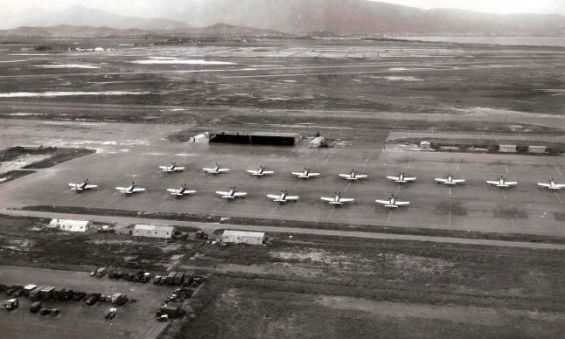In January 1958, Moroccans knew nothing about an incident that almost got the Kingdom nuclear-bombed. Yes, bombed. The Sidi Slimane Air Base, a US military facility built in 1951 and used at the time by the Strategic Air Command (SAC), was home to an accident that was kept secret for years.
Citing military sources, New York-based pan-African media Face2Face Africa reported that on the 31st of January of the same year, a B-47 bomber (six-engine, turbojet-powered strategic bomber) which carried a second-generation hydrogen bomb caught fire.
Nuclear components in Morocco
Seven years before the incident, the French government that controlled Morocco at the time allowed the United States forces to build military bases in the North African Kingdom. The country constructed three facilities in Morocco, responding to the Cold War and fearing the NATO after the Korean War.
However, unbeknown to the French, American Strategic Air Command deployed strategic bombers to its Morocco bases. This was confirmed in an unclassified survey conducted by the US Institute for Defense Analyses (IDA). «Following a request by the JCS (Joint Chiefs of Staff) in November 1951, the President in January 1952 also authorized the storage of nonnuclear components at the SAC forces in French Morocco (The French were not to be informed of the move», indicated the same document.

The 1958 incident, however, proved that components stored in the Sidi Slimane base were nuclear. According to the Bulletin of the Atomic Scientists, a nontechnical academic journal that covers global security and public policy issues related to the dangers posed by nuclear threats, the B-47 bomber in Sidi Slimane was carrying «the Mark 36».
The journal describes the weapon as a hydrogen bomb that «weighed about half as much as the early thermonuclears—but 10 times more than the new, sealed-pit bombs that would soon be mass-produced for SAC [the Strategic Air Command]».
«The nose of the bomb contained piezoelectric crystals, and when the nose hit the ground, the crystals deformed, sending a signal to the X-unit, firing the detonators, and digging a very deep hole. The bomb had a yield of about 10 megatons. It was one of America’s most powerful weapons».
The Mark 36 on fire
The same source says that on the day of the accident, the plane was on ground practicing runway maneuvers. «When the B-47 reached a speed of about 20 miles an hour, one of the rear tires blew out», starting a fire.
The blaze quickly moved to the plane’s main body. The crew escaped on the spot as the plane split in two. Firefighters «sprayed the burning wreckage for 10 minutes—long past the time factor of the Mark 36—then withdrew», added the same source.
The flames reached the bomb and the base was evacuated, following the orders of the Commanding General in Sidi Slimane. Some of the airmen had even left the region, driving to the Moroccan desert to avoid a nuclear disaster.

Miraculasly, high explosives in the Mark 36 burned but did not detonate as expected. Citing a report on the accident, the Bulletin of the Atomic Scientists, wrote that «the hydrogen bomb and parts of the B-47 bomber melted into a slab of slag material weighing approximately 8,000 pounds, approximately 6 to 8 feet wide and 12 to 15 feet in length with a thickness of 10 to 12 inches».
After the fire, which lasted for two and a half hours, forces in the Sidi Slimane broke the slag into small pieces and sealed them in cans and buried the other radioactive chunks near the runway. The Sidi Slimane base, unfortunately, did not have the proper equipment to «measure levels of contamination».
Although the accident was not deadly, it was kept a secret and everybody agreed to comply with the orders. The Atomic journal indicates that at first the base was planning to issue a communiqué, informing the world about what happened on the 31st of January but later realized that it was not a good idea.
«The less said about the Moroccan incident the better», a State Department official said at a meeting on the accident. King Mohammed V was, however, informed about what happened in the American base.





 chargement...
chargement...













